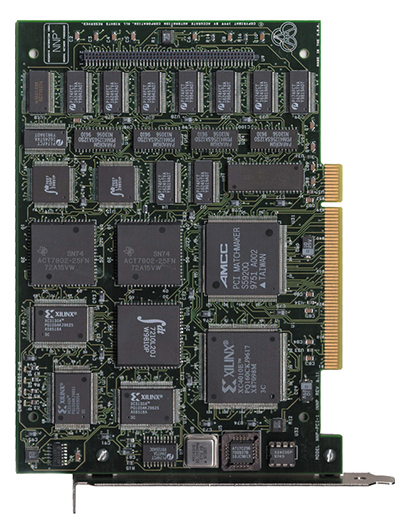Thinking Like a Human
The interconnectedness of neurons in the human brain was the model in developing an advanced computer processor that can perform up to a billion computations per second.
Small Business Innovation Research (SBIR) contracts from NASA and other government agencies went into the development of a unique computer technology that "learns" as it goes. This technology is known as neural networking. A neural network is a class of computational methods that loosely imitate the function of the brain. Among the benefits of neural networks are their ability to learn from experience and to generalize from their data set. They are also fault tolerant and can exploit parallel systems for rapid processing.
By combining the funding from these SBIR contracts, Accurate Automation Corporation (AAC) of Chattanooga, Tennessee, developed the only Multiple-Instruction/Multiple-Data (MIMD) neural network processor on the market. The product is called the NNP® and is utilized in a number of computational applications.
The NNP® is used onboard the NASA- and U.S. Air Force-sponsored LoFLYTE® aircraft. LoFLYTE® has been built by AAC to demonstrate a computerized flight control system that learns as it flies—especially important for the demands of ultra high-speed flight. LoFLYTE® is being used to explore new flight control techniques involving neural networks, which are able to continually alter the aircraft's control laws in order to optimize flight performance and take a pilot's responses into consideration.
Over time, the neural network system could be trained to control the aircraft. The use of neural networks in flight would help pilots of future aircraft fly in quick-decision situations and help damaged aircraft land safely, even when the controls are partially disabled.
The NNP® consists of many interconnected control systems, or nodes, similar to neurons in the brain. Each node assigns a value to the input from each of its counterparts. As these values are changed, the network can adjust the way it responds. The NNP®'s extensive layers of nodes allow for high-speed parallel processing. The device is capable of implementing multiple neural network algorithms and paradigms. The NNP® comes in a number of versions, accommodating different computer platforms. The processors are used in many commercial and non-commercial problem-solving applications, including flight controllers, financial predictions, intelligent modems, medical image classification, on-line learning, robot control, satellite communications, and fault diagnosis and prediction.
An interesting example of how the NNP® functions is demonstrated by the LoFLYTE® aircraft. During normal flight, the neural controller will use the data it receives from the telemetry system to compute the most efficient flight characteristics and adjust the control surfaces accordingly. However, the neural control system has an enormous advantage over traditional control systems during abnormal and unexpected flight conditions. For example, if the control system determines that the rudder is not responding, it will adjust quickly and automatically to control the aircraft using the remaining flight surfaces. Neural network control is necessary in hypersonic vehicles, such as LoFLYTE®, where the center of gravity of the vehicle can change significantly throughout the flight. The neural network can adjust to changing flight conditions faster than a human pilot, greatly enhancing the safety of the aircraft.
Computer processing systems that are modeled after connections in the human brain are creating exciting changes in the way we do and will expect networks to function.
NNP® and LoFLYTE® are registered trademarks of Accurate Automation Corporation

Accurate Automation Corporation's neural processor, the NNP®, was developed using the interconnectedness of the human brain as a model.













